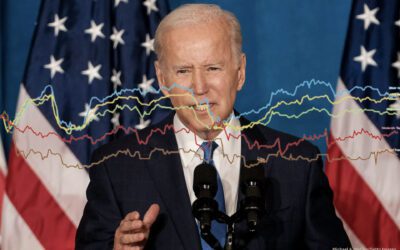The 2014 election was a devastating defeat for the Democratic Party, with consequences that may be felt for many years to come. Even so, we wrote in the aftermath of the 2014 election, “Despite the deep losses of 2014, the partisan predispositions of the Democratic coalition remain very much intact. There just is not any reason to think the compositional changes will not continue their long-term trends – and the Rising American Electorate will be key.” This prediction certainly holds true in this survey, as the Obama coalition asserts itself in dramatic fashion. But it is also shocking how quickly other changes produce a profoundly different America than the one that showed up last November.[1]
On almost all measures, Democratic numbers improve on this survey, beginning with voters’ overall mood. Right direction numbers jump nearly 10 points since the election and are likely to improve further with the growing economy and falling price of gasoline. Numbers also rebound for President and the Democratic Party. Democratic messages and Democratic policies outmuscle Republican messages and Republican policy, suggesting room for further advances. Meanwhile, the honeymoon for Boehner and McConnell barely lasted through the wedding reception as negatives for both, and the Republican Party as a whole, grow sharply. Most striking, the Tea Party Republican is back, defining the Republican brand.
These changes and the emergence of the Obama presidential year electorate leave the Democratic presidential candidate Hillary Clinton comfortably ahead of Mitt Romney (49 to 43 percent) and well ahead of Jeb Bush (52 to 40 percent). Voters’ hostility to George Bush’s brother is one of the more notable outcomes of this survey.
Given her support among white college educated women and strong support among most RAE voters, Clinton can win a national election without competing among white non-college voters; but this outcome would likely leave most of the Republican 2014 gains intact. Obviously, a lot can change over the next 22 months, but questions at this point are whether the Democratic presidential candidate can grow and protect her lead, and whether 2016 can build a big enough win to recover congressional and down-ballot losses from the 2014 cycle.
The answers to those questions depend in large measure on two overlapping dynamics: Democrats’ ability to build on and consolidate their support among RAE voters and Democrats’ ability to improve on their dismal performance among white working class voters. On the combined measure, Clinton opens strong among RAE voters—unmarried women, people of color, youth–winning 64 percent of RAE voters overall and 62 percent of unmarried women. Obama won 67 percent of unmarried women in 2012, however, and Clinton’s margin among white unmarried women (just 1 percent) is unimpressive. The news here is less edifying for Democrats among white working class voters.
President Obama won 40 percent of these voters in 2008 and 36 percent in 2012, and Democratic Congressional candidates won only 34 percent of the white working class vote last year. Clinton fares no better, winning just 35 percent of white non-college voters and 37 percent of non-college white women on the combined measure.
Critically, the goals of maximizing support among unmarried women and minimizing Republican support among white non-college voters overlap. Nearly a quarter of white non-college voters are unmarried women. The key to both groups is about getting the economy right. Overall, Democrats lead the Republicans on every issue tested in this survey, except the economy, which is the most important one. White non-college voters and white unmarried women are much more pessimistic about the direction of the country (76 percent wrong track among white non-college voters); both believe the road to the middle class is blocked for them. Progressives need to understand what they once understood–rising tides do not lift all boats and gains at the macro-economic level do not necessarily improve the economic prospects of these voters.
Both unmarried white women and white non-college voters prioritize jobs that pay; both focus on protecting Social Security and Medicare and college affordability. Critically, there is no evidence in this survey that the Democratic focus on the “women’s economic agenda” undermines support among white working class voters or white working class men. In fact, some of the gender-specific messages and proposals—equal pay, paid-sick time, help for working mothers—test as well or better among white working class voters as the non-gender-specific proposal. For both groups, this election needs to be about helping working men and women.
It also needs to be about reform. These are people who pay a lot in taxes, but do not believe the government works in the interests of middle families. They see special interests dominating government, often at their expense. They also see waste and inefficiency and are convinced they do not get their money’s worth out of Washington. Reform messages do as well for Democrats as broader economic messages and work particularly well among white working class voters. Reform policies constitute the most popular Republican policy proposal tested, and one of the most popular Democratic policies tested among unmarried women.
In one of the most important and interesting findings in this survey, a reform message opens votes up to a progressive economic narrative. Voters who heard the reform message before hearing the Democratic economic messages were more than 10-points more likely to describe the Democratic framing as “very convincing” as voters who heard the Democratic framing first (43 percent very convincing and 32 percent very convincing, respectively).
For Democrats, this represents an incredibly optimistic study. The road back may not be as long as many in the Party feared. But this road requires some improvement among white working class voters and some consolidation among base voters like white unmarried women. This means speaking directly to the economic experience of these voters, not the experience of Wall Street, focusing on the plight of the middle class and forwarding a set of policy options that directly improve the economic lives of these still-struggling families. And this road will likely be made much easier if Democrats make a serious effort on a government and campaign reform agenda.
[1] The survey of 950 likely 2016 voters was conducted from January 7-11, 2015. Voters who voted in the 2012 election or registered since were selected from the national voter file. Likely voters were determined based on stated intention of voting in 2016. Data shown in this deck is among all 2016 likely voters unless otherwise noted. Unless otherwise noted, margin of error for the full sample= +/-3.2 percentage points at 95% confidence. Margin of error will be higher among subgroups. 50 percent of respondents were reached by cell phone, in order to account for ever-changing demographics and trying to accurately sample the full American electorate.




